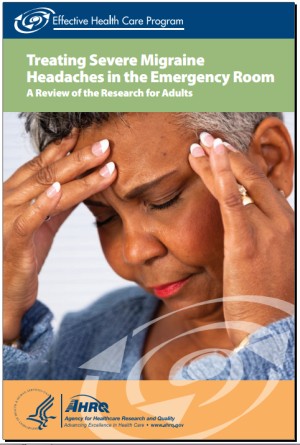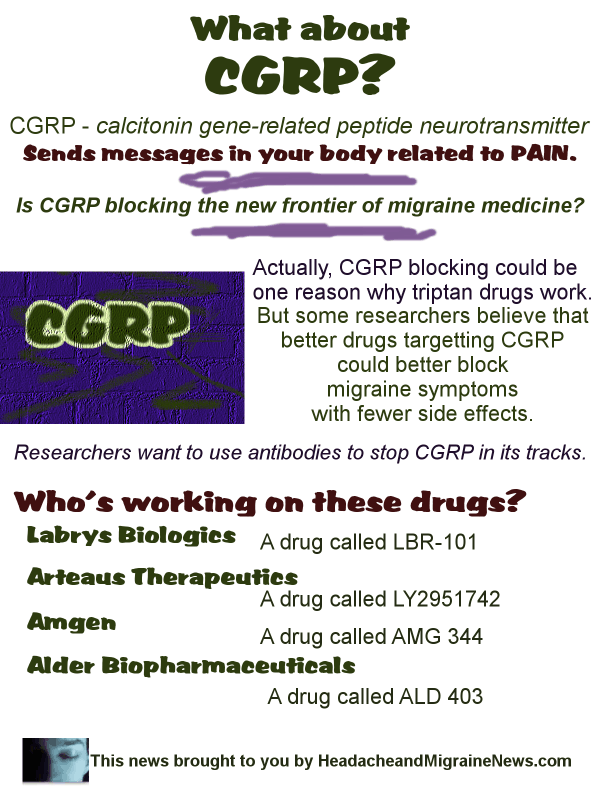What You Need to Know about Migraine in Emergency
Some newly published information is aimed to help patients and help professionals understand how migraine is treated in the emergency department (ER/ED). The Agency for Healthcare Research and Quality in the USA worked with the University of Alberta Evidence-based Practice Center in Canada to review and publish the information that has been gathering over the past few years.
 |
This information is aimed to help patients know what to expect, and to help doctors know what treatments have the best science behind them. Treatment in emergency is unique, with special challenges.
Here are some of the basics of treatment in emergency:
- You should especially get to emergency if your headache is very severe, if you have new or different symptoms, if you have a stiff neck or fever, or your headache starts very suddenly (especially if you’re over 50).
- Most (though not all) medications in the ED are given by a shot or through an intravenously (IV).
- Although pain is usually a major focus of treatment, your doctor may also need to focus on treating nausea and dehydration.
You may be disappointed with the studies’ use of the terms “migraines” and “migraine headaches”, which does tend to confuse the fact that migraine attacks, often serious ones, can come without severe headache. And to be fair, this is a focus on treating migraine headaches specifically. But although it’s understandable that the authors want to simplify things and use language people will recognize, I’m afraid the message will be that every migraine attack involves severe headache.
Recommended Treatments
You can use the links below to read through the material more carefully, but here are some of the treatments considered the best by the authors, based on their review of 71 clinical trials.
Of course, the “best treatment” may not be the best for you, depending on your symptoms and medical history.
Some of the most recommended treatments:
- sumatriptan
- neuroleptics (such as chlorpromazine or droperidol)
- NSAIDs (such as diclofenac or ketorolac)
- antiemetics (in particular metoclopramide)
- opioids are useful in some instances, but now rarely used because of side effects and risk of overuse.
One more interesting treatment is dexamethasone (Decadron), which is given in order to keep the pain from returning. It’s usually given along with another treatment, but because of the risk of side effects it’s not usually used unless the patient is at particular risk of an attack returning over the next few days.
There are other medications which may be used, and often they are used in combination (DHE may be effective in combination with other medications). But generally the medications above have the best evidence behind them – that means fewer side effects and better results – especially relieving pain and intensity of pain.
In spite of the concerns and cautions mentioned above, this should be a useful resource so that you, as a patient, know more about what to expect and what you should discuss with your doctor. Doctors, this will give you a quick review of the current science of treatment in the ED and ideas of what you need to discuss with your patients.
For patients: Treating Severe Migraine Headaches in the Emergency Room
For doctors/clinicians: Comparative Effectiveness Review Summary Guides for Clinicians




